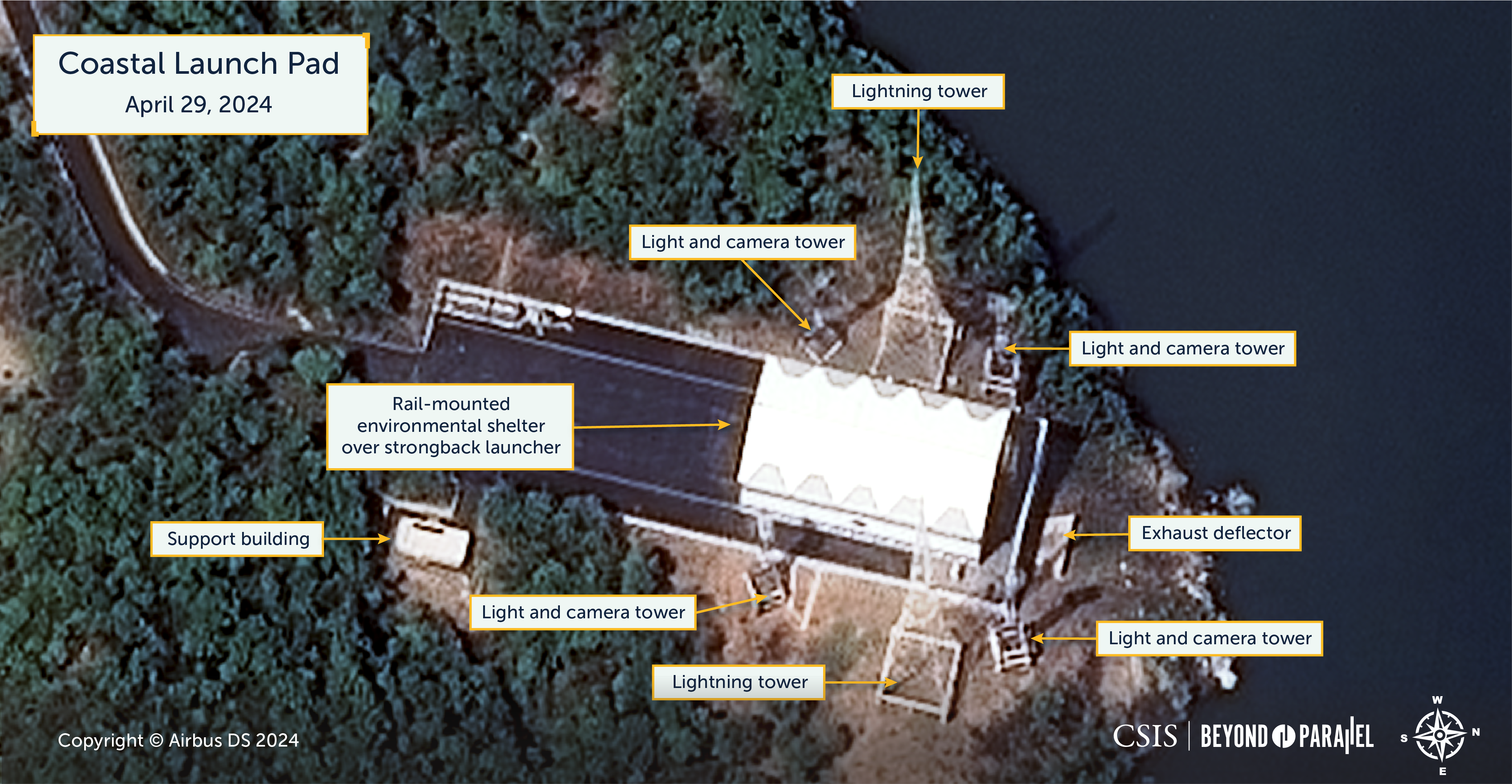
Another Failed Satellite Launch at the Sohae Satellite Launching Station

Key Findings
- The fourth launch attempt of the Malligyong-1 reconnaissance satellite on May 27, 2024, is a clear demonstration of the political importance assigned to satellite launches—particularly reconnaissance satellites—by Kim Jong-un and his desire to meet the goal of launching three satellites in 2024.
- Despite the possible technical assistance of Russian scientists, as reported by the South Korean press, the launch attempt—presumably using a modified Chollima-1 satellite launch vehicle (SLV) at the Sohae Satellite Launching Station —was not successful, suffering a catastrophic failure of the first stage of the SLV.
- Conducting a fourth SLV launch in twelve months, on top of numerous ballistic missile launches, is indicative of the physical and financial resources being dedicated to the SLV and satellite development program.
- Kim’s compressed timeline for launching SLVs could be the result of his public commitment to have three operating satellites by year-end, which also could be related to his positioning a future deal with Trump that would include a moratorium on long-range rocket launches in exchange for sanctions relief and de facto acceptance of the weapons arsenal.
On May 27, 2024, at approximately 10:44 PM KST, North Korea undertook a launch of the Malligyong-1-1 (만리경-1-1) reconnaissance satellite, using what they identified as a “new-type satellite carrier rocket,” presumably a modified Chollima-1 SLV (천리마-1), from the Sohae Satellite Launching Station.1 The launch suffered a catastrophic failure of the first stage and exploded shortly after launch.
The vice general director of North Korea’s National Aerospace Technology Administration (NATA) stated that the “launch failed due to the air blast of the new-type satellite carrier rocket during the first-stage flight.”2 The statement indicates a catastrophic failure of the first stage caused by “the reliability of operation of the newly developed liquid oxygen + petroleum engine.”3
The launch was a clear demonstration of the political importance assigned to satellite launches—particularly reconnaissance satellites—by Kim Jong-un and his desire to meet the goal of launching three satellites in 2024 that was announced at the 9th Enlarged Plenum of the 8th Party Central Committee in December 2023.4
North Korea has conducted four Chollima-1/Malligyong-1 launches during the past twelve months:
- May 2023 failed launch of a Malligyong-1 aboard Chollima-1 was attributed to the “low reliability and stability of the new-type engine system” and the “unstable character of the fuel used”;5
- August 2023 failed launch of a Malligyong-1 aboard Chollima-1 due to “an error in the emergency blasting system during the third-state flight”;6
- November 2023 successful launch of a Malligyong-1 aboard Chollima-1 which put the satellite into orbit;7
- May 2024 failed launch of the “Malligyong-1-1” aboard a “new-type satellite carrier rocket” due to “the reliability of operation of the newly developed liquid oxygen + petroleum engine.”8
The 75% failure rate of the Chollima-1/Malligyong-1 launches to date suggests a design under active development, some sort of systemic production/quality control weakness, or a combination of both. However, such failures are not unexpected in the process of refining launch capabilities. If North Korea can persevere through the next two announced launches, absorb and implement the lessons of its failures, and refine the Chollima-1 design, it is likely to produce a reliable SLV by this time next year.
Significantly, this fourth SLV launch event during the past twelve months, in addition to the numerous ballistic missile launches during the same period, clearly demonstrates North Korea’s determination to persevere and indicates that physical and financial resources are being dedicated to the SLV and satellite development programs. It also illustrates that there is a depth to North Korea’s SLV and satellite production infrastructure that is not typically understood.
The use of the phrase “new-type satellite carrier rocket” in describing yesterday’s launch event is likely a political phrase intended to convey significant progress in ongoing SLV development. The reality is most likely more mundane and that there was an evolutionary development of the existing Chollima-1 SLV that involved some level of modifications to the engine. The development of an entirely new SLV would represent a dramatic, unanticipated, and risky development.
What the North Korea statement meant in using the phrase “newly developed liquid oxygen + petroleum engine” is unclear. The previous liquid propellent SLV launches have undoubtedly utilized liquid oxygen (LOX) and some form of refined kerosene (typically RP-1).The phrase may have meant to indicate that the engine itself is either new or has been significantly modified from previous versions.
Finally, it appears that there may have been a relationship between yesterday’s first stage engine failure and engine tests conducted over the past year using the Yunsong Vertical Engine Test Stand at Sohae.
References
- The Malligyong 1 was previously identified by North Korea media as a “military reconnaissance satellite.” “KCNA Report,” KCNA, May 31, 2023. ↩
- “KCNA Report on Accident in Launch of Military Reconnaissance Satellite,” KCNA, May 27, 2024. ↩
- Ibid. ↩
- “Report on the 9th Enlarged Plenum of 8th WPK Central Committee,” Rodong Sinmun, December 13, 2023. ↩
- “KCNA Report,” KCNA, May 31, 2023. ↩
- “KCNA Report on Accident in Second Launch of Military Reconnaissance Satellite,” KCNA, August 24, 2023. ↩
- “NATA’s Report on Successful Launch of Reconnaissance Satellite,” KCNA, November 22, 2023. ↩
- Ibid. ↩
